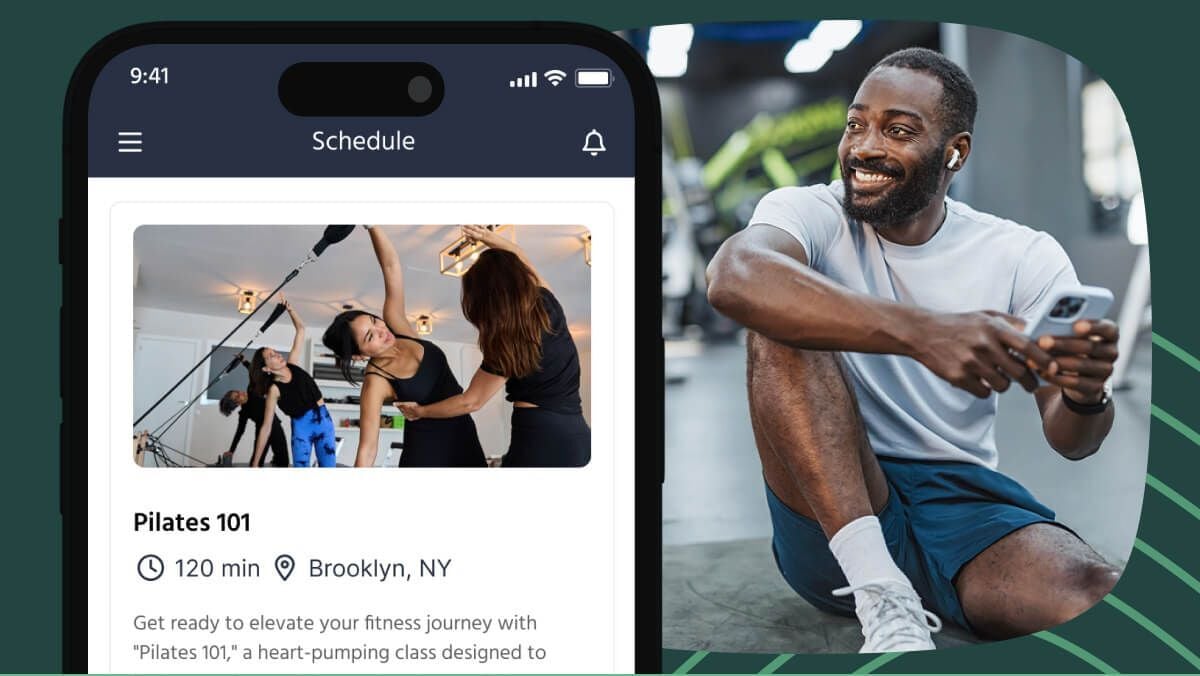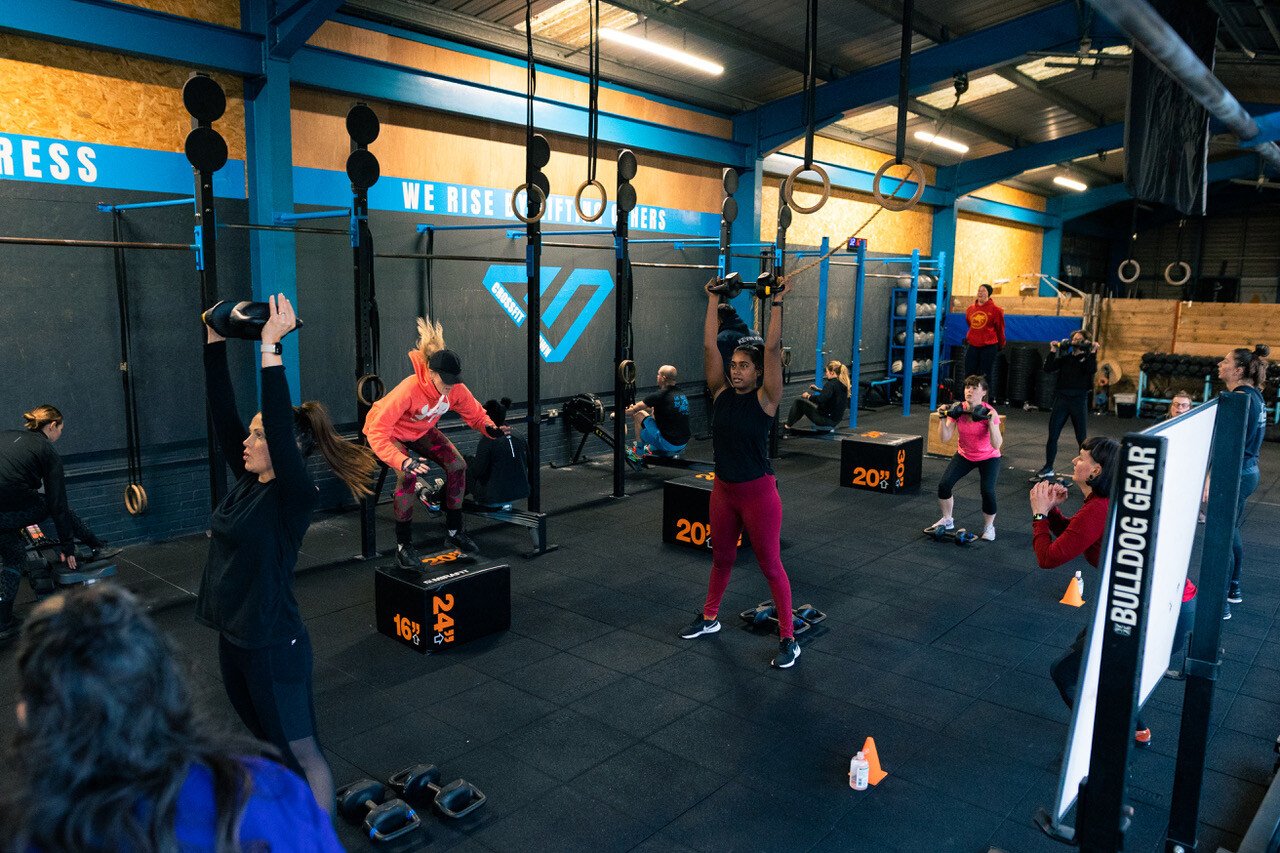You may be considering offering outdoor classes or events in the summer to make the most of the warmer weather and longer days.
Outdoor programming is a great strategy to boost attendance and beat the summer slump! But where to start? What kind of equipment is required? Or, if you've already got your programming mapped out and the logistics planned, you might be wondering how you can spread the word.

We turned to expert Staci Alden, founder of Alden Fitness Solutions, for answers. In today's post, she breaks down the process of designing outdoor programming step-by-step.
And there's more! Staci put together a free training session on how to master outdoor programming. In this session, she covers each step of the process in detail, all the way from selecting instructors to hosting the event. She provides real-life examples and creative ways to craft your program, shares marketing strategies and tips on how to leverage your outdoor events to grow your business. Watch the session here.
Mastering your outdoor programming
Outdoor fitness participation increased dramatically during the pandemic and continues to gain popularity. Have you noticed all the new outdoor-specific equipment and education companies?
Providing outdoor experiences can provide a unique environment for your clients and generate the interest of new clients passing by. Leading fitness outdoors may seem more accessible, open, and rules-barred, but it can quickly get complicated.
I’ve enjoyed planning and executing outdoor classes in parks, playing fields, and on rooftops each year since 2017 and have learned many lessons that I’m happy to share to help you. Let’s explore the necessary considerations, planning, and programming elements of outdoor offerings.
The three L’s of outdoor programming
These are the three L's you need to consider before getting started.
Liability
-
Check your liability insurance policy. Is it up to date? Does it provide coverage for teaching outdoors? If not, update your coverage and make it as detailed as possible.
-
Make sure your waivers are current. If possible, make a waiver specifically just for outdoors. If you’re unsure where to begin, contact your insurance provider.
-
Obtain the proper permits. If you plan to teach in a public park or on private property, get permission from the Parks and Recreation Department or the property owner.
-
Ensure your CPR/AED certifications are current and an AED and First Aid kit are on-site for sessions.
-
Visit the space to see if the lighting is adequate and if you’ll need to ask permission to turn on additional lighting. Research the crime statistics.
Skip the hassle of asking customers to sign paper waivers and policies and take it all online! Learn more about TeamUp's online waivers, forms and policies feature here.
Logistics
-
Where will participants park their cars?
-
Where will they put their things (phone, wallet, keys, extra layers of clothing, etc.)?
-
How will they sign up for class, and will you track them?
-
Will you charge money?
-
How will you collect payment?
-
How will you communicate changes in location or timing due to weather or other unexpected events?
Note: The answers to these questions largely depend on whether you offer a one-off class or something ongoing. Also, if your region's weather can be unpredictable, decide if you want a Plan B and how you will communicate updates to participants.
One option is to create a group text thread or use WhatsApp or Facebook Messenger to send last-minute notifications if the location changes or the session is canceled. Or, if you're using TeamUp's Custom Branded App, you can quickly notify customers of any changes via instant push notifications.
Location
Deciding on a location for outdoor fitness can quickly become overly complicated, so start somewhere!

When determining your preferred site, the most critical factors are safety, space, bathroom access, and parking. Here’s a list of possible locations:
-
Park
-
Trail
-
Field
-
Empty lot
-
Corporate break areas
-
Stadium or sports field
-
Playground
-
Apartment community center
-
Pool deck
-
Beach
During the pandemic, many fitness facilities built designated outdoor spaces, often on the grounds of their indoor facility, which is yet another option.
Take inventory of all your options, and compare the pros and cons. Ensure there is enough space for the number of participants you anticipate. Visit these areas on the days and times you’re considering to see if other events, landscaping, or the sun’s location might affect sound, safety, shade, etc.
Consider and prepare talent
Before reviewing some of the finer points of programming an outdoor group fitness class, it’s essential to consider whether coaching outside is something you and the team you work with really want to do.
Recognize within yourself (and anyone you hope to hire or work with) that teaching outdoors takes more work and time. When coaching outside, you don’t have the luxury of easily accessible equipment, a sound system setup, and a prepared space. You must invest a lot of time to set up and take down. You must be willing to show up early, stay afterward, and be nimble when things change last minute.

Also, don’t do it if your team or yourself are not excited about getting creative or being challenged with the outdoor environment!
Scheduling
Regarding scheduling, most outdoor sessions will be successful before work, at lunchtime, after work, and after school (as with indoor classes). However, the pandemic did make for flexibility in many work schedules, so it may be worth asking participants if they can make it earlier in the day so you don’t end up in the dark when the seasons change.
The time of day will also affect your given location. For example, locations with both concrete and grass spaces appeal to different people during different time frames. Participants in the early morning might prefer the concrete spaces because the grass is wet with dew, while the classes in the afternoon might prefer the grass because it had time to dry out.
Weather conditions
The pandemic proved that outdoor classes could be successful year-round in even some of the most unexpected places. While you might think extreme temperatures, wind, and rain would prevent participation in colder months, plenty of people are not deterred. They find community in the misery of discomfort and being in it together!
However, those living in warmer areas throughout the year may be less interested in going outside when it’s colder or raining. Everyone’s tolerance level is different, so you need to be flexible. Rather than complaining about the weather, finding the silver lining for participants to keep their spirits and energy levels up is crucial.
Programming
While this may seem obvious, aim to make your outdoor fitness experiences specific to the outdoors. We should be making outdoor experiences about the joy of being outside and taking advantage of what an outdoor space has to offer over an indoor space. We aren’t working out outside because we have to; we’re working out outside because we want to, and we’re taking full advantage of the space and freedom it offers.

Let’s review some outdoor format options, specific outdoor considerations for each, and how you can use the unique elements of the outdoor environment to enhance the experience.
- Yoga: Find the flattest location possible. The grass may seem friendly, but bumps and grooves make some poses, especially balancing postures, more challenging. Use cues that highlight the fact that you’re outside. For example: “Reach your hands toward the sky;” “Watch the trees swaying while in your tree pose;” “Take a breath of fresh outdoor air;” or “Feel the sun on your face.” And create a class plan for the outdoors: You might offer a long warmup and shorter savasana if it’s colder or teach cooling poses if it’s warmer.
- Sports Conditioning (Tennis, Soccer, Running, etc.): Educate participants about the value of exposure to the elements by training outdoors before the big game or event. Choose a large location with plenty of room to sprint, jump and practice agility. Use cones or painted lines for various challenges and games to bring out the competitive spirit in your outdoor athletes.
- Cycling: Teach an outdoor class specific to outdoor cyclists, such as cross-training or leading a cycling group. Cross-training involves strengthening supporting muscles, refining alignment, and teaching mobility exercises, whereas a cycling group might include a warmup, intervals or long rides, and a cooldown. You might also create a class focusing on cycling-specific recovery, with corrective exercises and stretches targeting overworked, tight muscles that spend a lot of time in forward flexion.
- Climbing: Climbing has seen a significant spike in popularity due, in part, to the rise of indoor climbing gyms. Cross-training for climbing is an excellent option for an outdoor program, especially if you can incorporate suspension training and playground equipment such as monkey bars to develop core and grip strength.
- Bootcamp: You have many creative options when teaching a boot camp class! In addition to using standard (portable) equipment such as resistance bands, suspension trainers, and medicine balls, you can also incorporate stairs or bleachers, benches, pull-up bars or rings, fences, painted lines, and more. Have fun!
Read a bootcamp owner's guide to running outdoor classes here!
- Dance and kickboxing: While the grass may seem like an ideal place to offer dancing and kickboxing, it can be unpredictable terrain, depending on how freshly cut the grass is, and you never know if or when sprinklers will turn on during class in the early morning or evening hours. Ask anyone leading these sessions to consider lowering the number of directional changes and slowing the tempo down. When teaching on concrete, remind participants about the increased stress put on the joints, and encourage rest breaks for anyone experiencing discomfort in their hips, knees, or ankles.
Level the playing field
An outdoor environment is an accessible, less-intimidating environment than a gym, which allows more people to discover the joy of consistent movement.
A gym has mirrors, and the outside is just the outside. The outdoor environment can break the monotony of coaching and working out in a gym.
Set the expectation for yourself and your participants that there may be a "learning period as we go.” If done right, outdoor offerings can provide a much-needed option for new and veteran participants . . . and coaches.
Staci is committed to helping fitness managers and club operators elevate their programs, instructors, and leadership. As an experienced consultant and strategic planner for digital and in-person offerings, her clients range from large luxury health clubs and international companies to small studios. She has designed world-class studios on a tight budget, launched signature formats, and built turnkey solutions for enhancing systems, leaders, and talent. Staci is also a master instructor and established presenter, podcaster, writer, and YouTube influencer, regularly interviewing and collaborating with industry thought leaders.
Click here for more information on working with Staci, or email her at contact@stacialden.com for more information.








.png)
